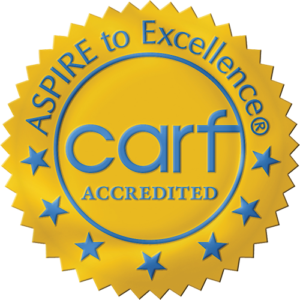
You are at a party when you hear people yelling, someone is overdosing in the backyard. You have naloxone on you and rush out to help. The person is starting to turn blue and you know you need to act fast. You open the spray and administer the dose, trying to help the person sit upright. They gasp as they catch their breath, wide-eyed and wondering what happened. As you wait for EMTs to arrive, the person begins telling you they are waiting to get into medication-assisted treatment, but their appointment is a week away. When help arrives, you make sure to tell the EMTs what happened and what the person told you.
In 2021, 3,038 opioid overdoses occurred in Tennessee, which accounted for 80% of the total drug overdoses. ReVIDA® Recovery has been working throughout the Appalachian area to provide accessible treatment options for those managing an opioid use disorder. With medication-assisted treatment options and flexible outpatient services, we have helped many reclaim their lives from addiction. Our blog serves as a free tool for those wanting to learn more about the latest topics surrounding substance use disorders. Today, we are discussing the difference between naloxone and Suboxone.
Table of Contents
What Is Naloxone?
Naloxone is an antagonist that is used to reverse the effects of opioids such as heroin or fentanyl. The brand name Narcan® is commonly used when referring to naloxone. When administered, naloxone dislodges the opioids from the receptors and blocks them from reattaching. This helps restore breathing and central nervous system functions in the case of an opioid overdose. It comes in two primary forms – a nasal spray and an injection. With so many people using opioids knowingly and unknowingly, it is recommended to keep naloxone on hand in case of an overdose situation. It is usually available at pharmacies and local needle exchanges. The effects of naloxone are temporary, and medical attention should still be sought if an overdose occurs.
What Is Suboxone?
Suboxone is an opioid partial agonist primarily utilized in treating opioid addiction. This means that it works similarly to opioids such as morphine or heroin, but it only partially activates the receptors within the brain. Suboxone still creates a euphoric feeling but it is much less than illicit opioids. Generically, Suboxone is known as buprenorphine-naloxone and usually comes in a film that is dissolved under the tongue. It is only available by prescription from a doctor, nurse practitioner, or physician assistant.
The purpose of Suboxone is to reduce cravings and help make withdrawal symptoms more manageable. It has been proven effective in treating those with opioid use disorders by preventing overdoses and returns to use. Suboxone alone is not a treatment and should be used as a part of a full program, including therapy and coping skill classes.

Differences Between Naloxone and Suboxone
Naloxone and Suboxone share some similarities but have different properties. Suboxone does contain naloxone, but when used as directed, the naloxone does not have a function. Those who use illicit opioids may try to misuse Suboxone by injecting it, trying to increase the euphoric feeling it produces. When injected, the naloxone works by blocking the opioid receptors and preventing the desired effects. When taken orally as prescribed, less than 10% of the naloxone is absorbed, allowing the buprenorphine to take effect.
Naloxone by itself will not create a feeling of euphoria or relaxation, as it is not an opioid or part of the opioid family. Because of this, naloxone is not harmful if taken when an overdose is not occurring, which is why it is best to always administer it when an overdose is suspected.
How Naloxone and Suboxone Are Used Differently
Suboxone and naloxone have their own purposes and are used for different situations. Naloxone alone is used to reverse the effects of an opioid overdose. This is one of the only uses for naloxone, and it does not create a “high” in the process. However, it is important to note that stronger opioids and combinations have been emerging throughout Appalachia and the United States. It can take multiple doses of naloxone to reverse an overdose, and it will only work on those who have taken opioids. Naloxone does not treat stimulants, alcohol, or other substance overdoses.
Suboxone has been proven to be an effective component in treating opioid use disorders. Withdrawal symptoms and cravings are the top reasons people avoid treatment or cannot stop their use. By taking Suboxone, withdrawal symptoms become lessened and much more tolerable. When followed under a doctor’s orders, Suboxone can be an integral part of recovery and prevent future overdoses. Suboxone has a ceiling effect, meaning taking more than the recommended dose will not increase the effects. It is very difficult to overdose on Suboxone, and with naloxone as a component of the medication, it is difficult to misuse as well.
Side Effects of Naloxone and Suboxone
Naloxone and Suboxone have similar side effects. Some side effects of naloxone include:
- Nausea
- Vomiting
- Constipation
- Sweating
- Muscle aches
- Anxiety
- Mood swings
Side effects of Suboxone include:
- Drowsiness
- Sweating
- Insomnia
- Constipation
- Headaches
- Nausea
- Dizziness
If Suboxone is taken while opioids are still in the system, it can cause withdrawal symptoms to appear and/or worsen. It is best to start a Suboxone regime 24 hours after the last dose of the opioid was taken. This ensures the body is starting the detox process.
Naloxone and Suboxone in Opioid Addiction Treatment
Naloxone alone is only used to treat an opioid overdose and is not really a part of treatment. Suboxone can be used alongside a program that includes therapy, support groups, and skill-building classes to create a successful path to recovery. Every person is different. Some will only need to take Suboxone for a short time while others may take Suboxone indefinitely as part of their ongoing recovery. More and more addiction treatment facilities are turning to a harm-reduction modality, and taking Suboxone for opioid use disorder can make all the difference in a successful recovery.

Getting Suboxone Treatment in Tennessee
Deciding to get help for opioid addiction is no small feat, but it is the beginning of freedom. Whether you have tried in the past or are reaching out for the first time, finding treatment using Suboxone can be the difference in your success. The myths surrounding medication-assisted treatment have been proven time and time again to be false, and there is no harm in seeking this type of treatment. Finding what works for you will begin your journey to reclaiming your life from opioids and building a new and brighter future.
If you or someone you love is managing an opioid use disorder, it’s not too late to reach out for help. ReVIDA® Recovery has a full program including different therapies and Suboxone treatment. Our compassionate staff believes in supporting and empowering you through your journey. You are a person, not a problem or a disorder. Together, we will create a plan that encompasses your goals, needs, and desires. Call us today at 423-631-0432 to learn more about our program offerings.
FAQ About Naloxone and Suboxone
Is buprenorphine naloxone film the same as Suboxone?
Buprenorphine naloxone is the generic name for Suboxone. Buprenorphine naloxone in film form is most commonly associated with Suboxone, while other forms such as tablets can have different brand names.
What’s the difference between naloxone and Narcan?
Naloxone is the generic name for NarcanⓇ.









